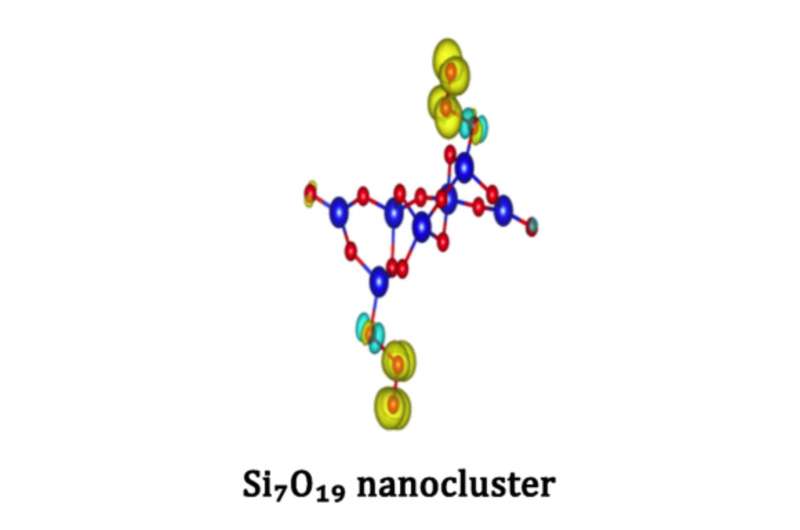Researchers find possible reason for the carcinogenicity of silica dust

Scientists from LPI RAS, Skoltech, and MIPT have discovered unusual properties of silicon nanoparticles. They have shown that at normal conditions silica nanoparticles are enriched with oxygen. Such nanoparticles are magnetic and contain reactive oxygen species (in particular, peroxo- and ozonide ions and oxo-radicals), which may explain the known high toxicity and carcinogenicity of silica dust.
Silicon nanoparticles are promising for many applications including nanoelectronics, optoelectronics, solar cells, biomedical imaging sensors and others, and have been the subject of intense research for over two decades. Silicon nanoparticles oxidize in the presence of oxygen, but details of this process are still unclear. It is well known that silicon dioxide dust has a negative effect on human health and causes silicosis and lung cancer, but the origin of this effect is unknown.Scientists from the Oganov and Uspenskii groups used the USPEX algorithm (Universal Structure Predictor: Evolutionary Xtallography) to demonstrate that at normal atmospheric conditions, silica nanoparticles exist not with the expected classical composition SiO2 postulated by classical chemistry, but in an oxygen-enriched form (e.g., Si7O19). Extra oxygen atoms have magnetic properties and form reactive oxygen species (ROS). ROS, such as peroxide ions, are highly reactive with biomolecules and have long been suspected as a major cause of cancer.
"We were very much surprised that at normal conditions in an oxygen atmosphere, we found stability of new reactive and magnetic silica nanoparticles instead of the classical SiO2 nanoparticles," says Sergey Lepeshkin, the leading author of the study, which provides a likely explanation of the known high carcinogenicity of silica dust.
More information: Sergey Lepeshkin et al, Super-oxidation of silicon nanoclusters: magnetism and reactive oxygen species at the surface, Nanoscale (2016). DOI: 10.1039/C6NR07504E
Journal information: Nanoscale
Provided by Moscow Institute of Physics and Technology


















